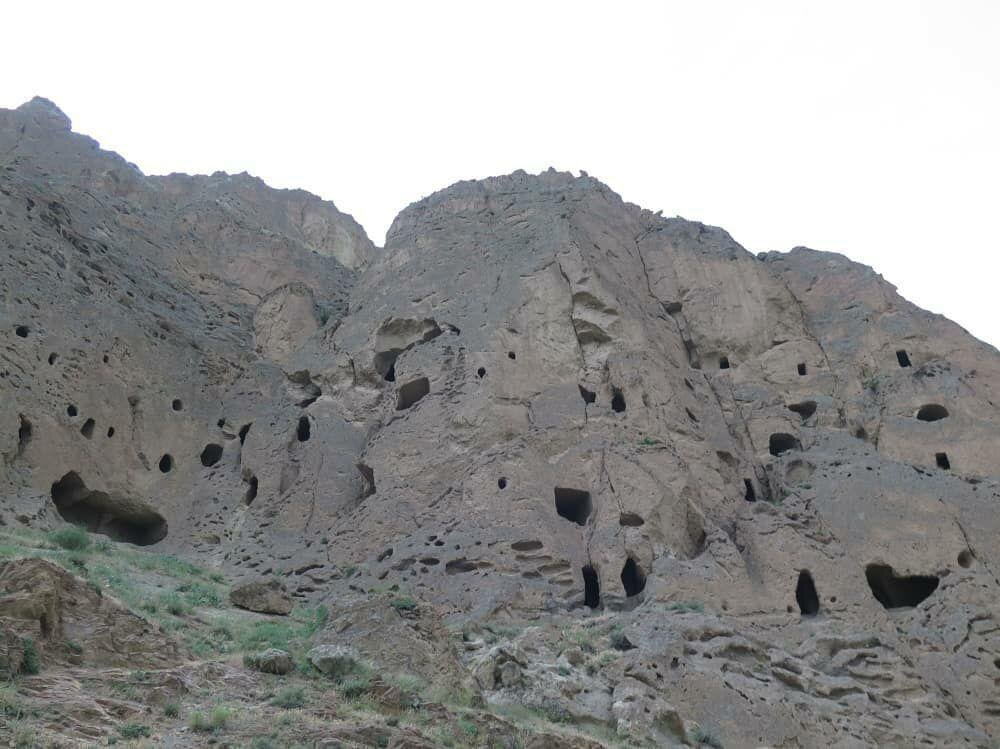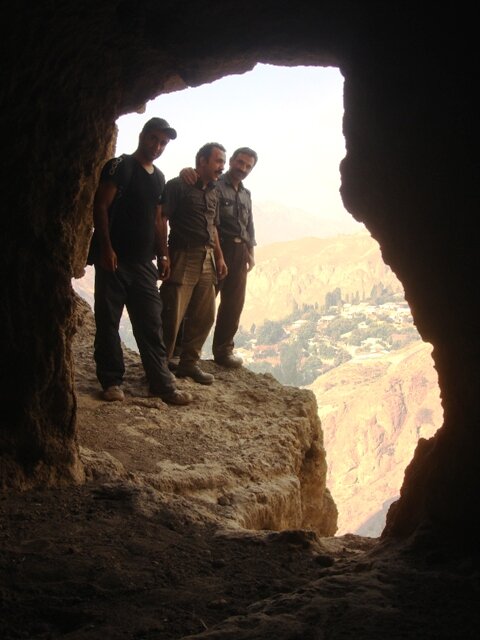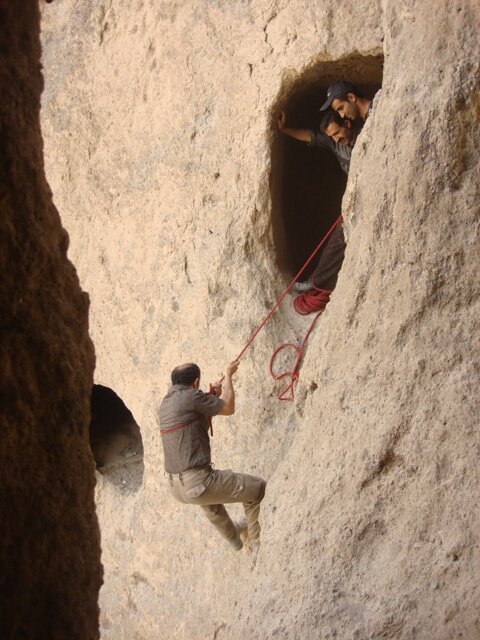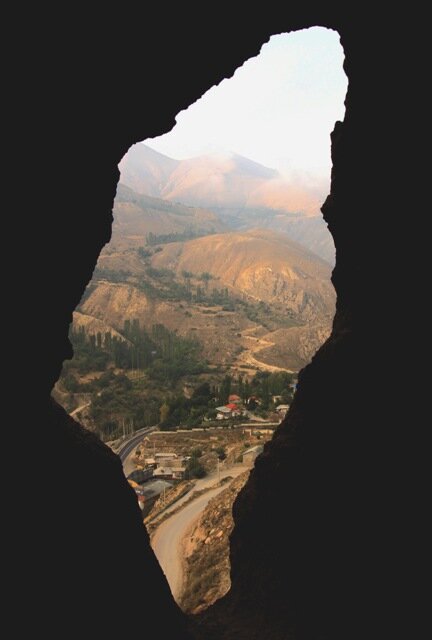Archaeologists to shed new light on hand-carved caves in northern Iran

TEHRAN – An archaeological team has commenced work on Kafer Keli hand-carved caves, a unique site in the Haraz Valley of Mazandaran province.
The project aims to clean and make readable the intricate carvings found on the walls of those caves, which represent some of the most remarkable examples of rock-carved architecture in northern Iran.
Situated in Kahrud village of Amol county, the Kafer Keli caves are renowned for their exquisite wall carvings and rock art (miniature motifs).
The project, the first of its kind at this site, has been initiated with the permission of the Research Institute of Cultural Heritage and Tourism, ISNA reported.
Financial support for the project comes from the Kahrud village council and local entities to better understand the caves’ historical significance.

A significant rock-carved heritage
On Sunday, Meisam Fallah, head of the archaeological team, explained the unique features of these caves, describing them as a part of Iran’s mountain-carved architectural heritage, located in the lower reaches of Mount Damavand and nestled within the Alborz mountain range. “During two seasons of systematic surveys, we identified nearly 30 geographical locations featuring similar architecture on the northern and eastern slopes of Damavand,” Fallah stated.
He emphasized that the diversity, frequency, and geographical distribution of these hand-carved caves along the southern Caspian Sea to the Iranian plateau (Haraz Valley) are unique in the country. “These structures reflect the cultural beliefs and ideologies of the Alborz mountain dwellers,” Fallah added.

Focus on documentation and preservation
Fallah highlighted the objectives of the current excavations, saying: “After thorough surveys, we decided to focus on the Kafer Keli complex in Kahrud to gather more precise information through excavation and documentation.”
This complex consists of four separate chambers, or “dakhmas,” without internal connections, each with distinctive wall carvings, he explained.
The archaeological team aims to clean and preserve these carvings, which have been subject to significant damage from both natural erosion and unauthorized digging.
The caves, located on the southern edge of Kahrud village, are carved into a sandstone bedrock in the central Alborz sedimentary plains, beneath the Kahrud Fortress.

Elsewhere in his remarks, the archaeologist said the positioning of the Kafer Keli complex has created a steep terrace in front of one of the chamber entrances, covered with soil and stones.
Furthermore, another goal of the project is to uncover any cultural remains or evidence buried within these deposits. “Unfortunately, parts of the architecture inside the caves have been damaged or covered by debris, making the clearing and preservation of these spaces a top priority,” Fallah noted.
The team, however, is mainly focused on documenting and studying the miniature motifs on the cave walls, which represent some of the most significant historical evidence in Iran.

Diverse themes
The carvings on the walls of Kafer Keli’s caves are diverse, featuring human, animal, mythological, natural, geometric, and calligraphic designs.
“The carvings include images of human figures shooting arrows, mounted archers, soldiers holding shields and swords, and various animals such as goats, deer, horses, and birds like pheasants and partridges,” Fallah explained.
The archaeological work is hoped to mark a significant step toward understanding and preserving one of northern Iran’s most important rock-carved sites, with the potential to open a new chapter in the region’s cultural and historical narrative.
AM
Leave a Comment